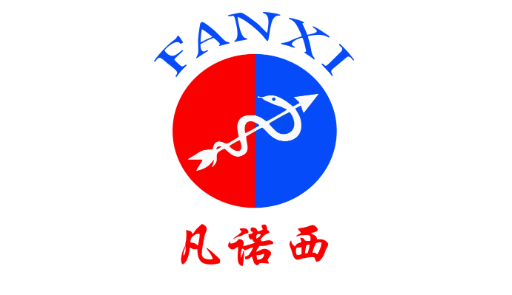On August 16, the Farsoon Technologies 3D Printing Innovation & Industrialization Forum, which was sponsored by Farsoon Technologies and co-organized by Sichuan Farsoon Turing Additives Manufacturing Technology Co., Ltd. (hereinafter referred to as “Farsoon Turing”), was held inside Farsoon Turing,the enterprise in the second batch of enterprises formed in the park, attracting more than 60 guests from the industries such as aerospace, electronics, scientific research, medical care and processing services.

“In this new park, we’ve just conducted the first activity of the forum inside the office place which has just been put into operation. This is of a special meaning of commemoration.” Huang Yong, General Manager of Farsoon Turing said, extending appreciation for the participation of all guests at his speech, and hoping to take this activity to discuss 3D printing application with the experts and scholars in the industry.

Before the forum, Farsoon Turing opened its corporate exhibition hall and laboratories and demonstrated its 3D printing physical models and 3D printing equipment, which aroused discussions and inquiries among the participating guests.
At the industrialization forum, speakers from Farsoon Technologies, the State Key Laboratory of Polymer Materials Engineering (Sichuan University), the Affiliated Hospital of Chengdu University and Shenzhen Sunshine Laser & Electronics Technology Co., Ltd. delivered speeches on such topics as the industrial history and technical difficulties of 3D printing, as well as its clinical applications in orthopedics.

Additive Manufacturing (AM) Technology, commonly known as 3D printing, is a non-removal process which overlays a variety of industrial, daily-use or artistic products by means of layered production with the support of digital manufacturing equipment similar to printers.
Cheng Jie, Executive Director and Deputy General Manager of Farsoon Technologies, said that 3D printing has a development history of only 30 years since its emergence in the 1980s. In recent years, the 3D printing industry has grown rapidly with the advancement of technology, and the total value of the global 3D printing industry in 2017 reached USD 7.3336 billion, an increase of 21% year on year. At present, 3D printing is mainly used in such sectors as aerospace, automotive, medical care, mechanical and electronic products, cultural creativity and scientific research and education.

Lan Hai, Deputy Director of the Department of Orthopaedics of the Affiliated Hospital of Chengdu University, illustrated the application of 3D printing technology in the clinical applications at his speech entitled the Application of 3D Printing Technology in Orthopedics.
According to Lanhai, 3D medical printing can play an important role in the specialties of prosthetics, ophthalmic corrections, surgical models, surgical guides and implants, in addition to surgical planning. It is estimated that the 3D printing business will reach USD 9.639 billion by 2024, and the 3D printing implantation market will reach USD 8.12 billion.
“With 3D printing technology, we can print patients’ bone models before surgery, thus assisting in the surgical planning. Some difficult problems can be simulated on the 3D models so as to improve the accuracy and efficiency of operations.” Lan Hai said.

Farsoon Technologies is a leading 3D printing enterprise in the industry in China. In order to make a better deployment plan for the medical field, Farsoon Technologies cooperated with West China Hospital of Sichuan University and CDHT in the establishment of Farsoon Turing in 2018. Since its inception, Farsoon Turing has gathered a variety of high-quality resources, thus laying a solid foundation for its exploring the application of 3D printing in the medical field.
As the vanguard in the construction of a strong manufacturing country, Chengdu has maintained good momentum for development, thus rendering great potential for 3D printing. Huang Yong said that Farsoon Turing, as the advance team of Farsoon Technologies specially deployed in the medical field, will fully exert its efforts to promote the cooperation between Farsoon Technologies and local hospitals.

Farsoon Turing has recently entered the second phase of Tianfu Life Science Park, with the focus on the R&D, production and promotion of medical 3D printing equipment, materials, medical devices and 3D printing-related image grouping, so as to provide 3D printing overall solutions to clinical treatment.
Huang Yong said that the company relies on its talent and technical resources of all kinds in the 3D medical printing sector at home and abroad, and will focus on three aspects in the future:
Firstly, convert clinical demand into specific products and produce Type I, II and III medical devices;
Secondly, launch dedicated 3D medical printing equipment as per the requirements of the medical industry;
Thirdly, develop the software, materials and consumables dedicated to 3D medical printing.

A few years ago, 3D printing was once on the top of rolling waves. Now, when the climax recedes, how will the companies involved in it continue their enthusiasm? In this regard, Farsoon Turing has a long-term consideration.
The industry chain of 3D medical printing is long, so that Farsoon Turing actively introduces some academicians (experts) or their teams to establish the technological innovation platforms, with the actual needs of the clinical applications as the point of entry.
“In the future, we will constantly launch 3D printing products and services for such sectors as orthopedics, ophthalmology, otolaryngology or gastroenterology, or even organ printing, biological cell printing.”



Park WeiChart